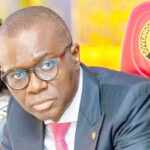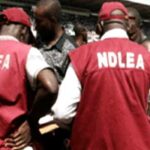Software is pushing standalone textbooks into the past, and faster than ever thought, according to Microsoft founder, Bill Gates.
For years, in his annual Gates Letter, Gates has speculated about software complementing the work of classroom teachers but also augment learning for students.
It is no longer speculation. Digital curricula have entered classrooms in the US, from kindergarten to secondary school, using services like i-Ready, Zearn, and LearnZillion.
And more than 3,000 schools in the US teach a free digital course called Big History, funded by the Bill & Melinda Gates Foundation. Big History uses software to give students immediate feedback on their written assignment.
Traditional textbooks are “a pretty limited way to learn something. Even the best text can’t figure out which concepts you understand and which ones you need more help with. It certainly can’t tell your teacher how well you grasped last night’s assigned reading,” says Gates.
Digital curricula come in different modes—complete with a suite of readymade learning aids and materials that teachers can administer and control, freeing up more time that teachers can devote to individual students.
“Suppose you’re taking high school algebra. Instead of just reading a chapter on solving equations, you can look at the text online, watch a super-engaging video that shows you how it’s done, and play a game that reinforces the concepts. Then you solve a few problems online, and the software creates new quiz questions to zero in on the ideas you’re not quite getting,” Gates explains.
“All of this is a complement to what teachers do, not a replacement. Your teacher gets a rich report showing what you read and watched, which problems you got right and wrong, and the areas where you need more help. When you come to class the next day, she is equipped with a ton of specific information and suggestions to help her make the most of her time with you.”
Like period review of learning text and curricula, the software that decides if you have answered right goes through cycles: gathering feeding on existing products, collecting data on what works and what makes them better.
It is gaining momentum in the US.
Last year, Lagos government began moves to replace obsolete textbooks with electronic books, but its curriculum hasn’t gone as far as algorithms that rate student performance and produce reports teachers can act on.
Melinda Gates, co-founder of the Bill & Melinda Gates Foundation, and co-author of the Annual Gates Letter, says in addition to adapting to what students know, the growing fleet of online tools facilitate new approaches to teaching and learning that adapts to who students are.
“In 2019, the typical college student is no longer the stereotypical student who lives in a dorm and graduates in four years after a few spring breaks somewhere warm.
“Almost half of today’s college students are 25 or older; well over half have a job; more than a quarter have kids of their own.
“These “non-traditional” students often don’t have the time or resources to effectively navigate an inefficient, inflexible learning environment designed to meet other people’s needs.
“That’s a big reason why two out of every five students who enrol in higher education will either withdraw for a while or drop out altogether.”

 Join Daily Trust WhatsApp Community For Quick Access To News and Happenings Around You.
Join Daily Trust WhatsApp Community For Quick Access To News and Happenings Around You.


